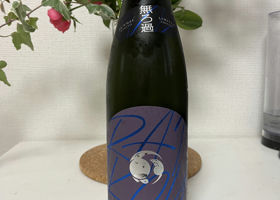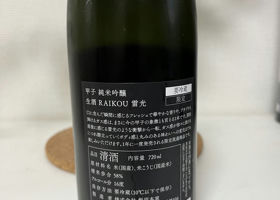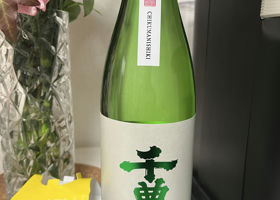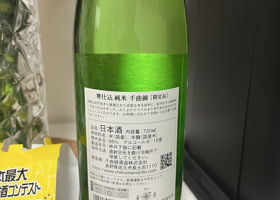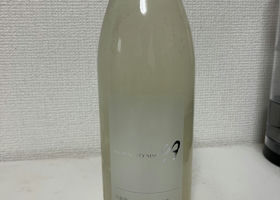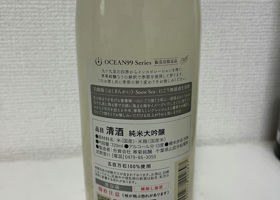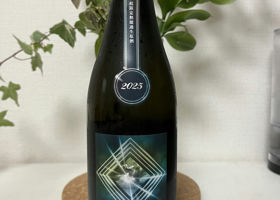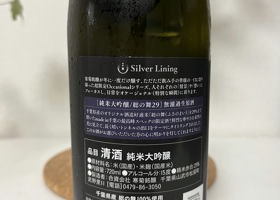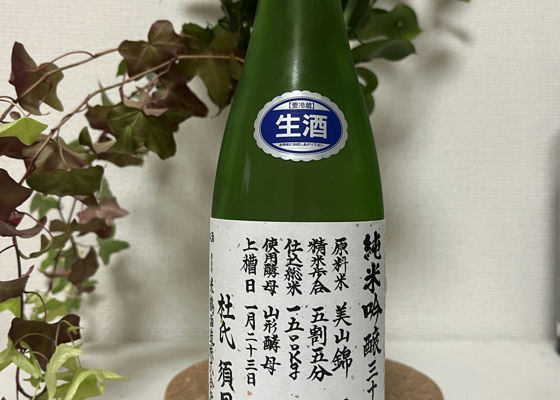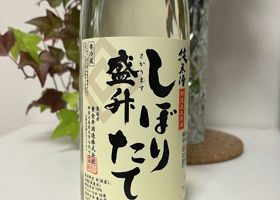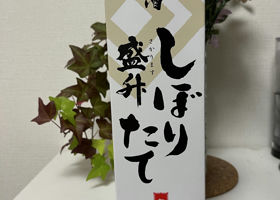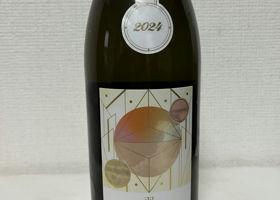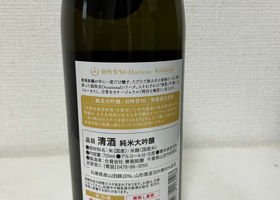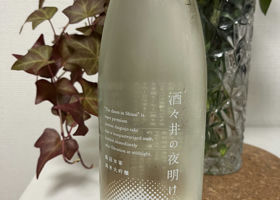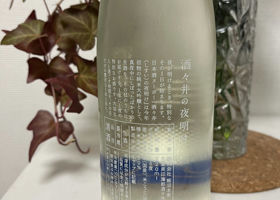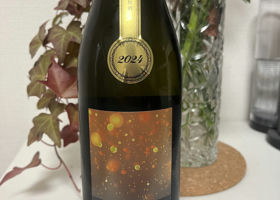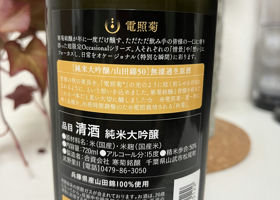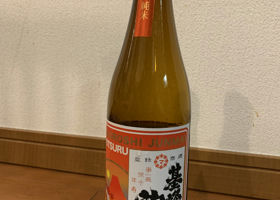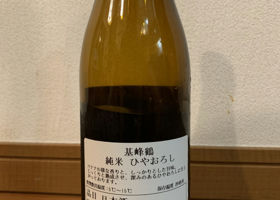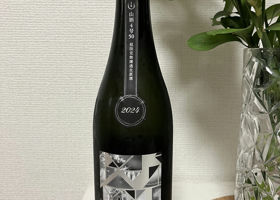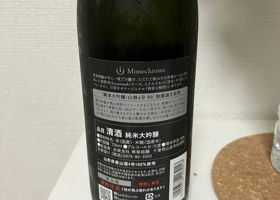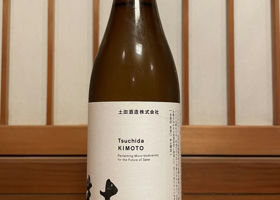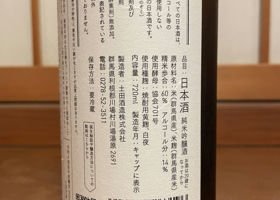Timeline
(カワダ調べ)Kinoene blue-green algae
Iinuma
Purchased at a tasting.
It is peach and banana, but personally, the taste is Koshi-like, light and fruity. Cider, apple. Delicious. It is named after one letter from his son's name. Nice name.
The brand was renewed in 2011.
In November of 2012, there was a change in the name and the company became the 16th generation.
The 12th head of the family was born in the year of Koshi, and the name of the sake was given to the brewery in response to the order to dedicate sake to nearby temples and shrines. (カワダ調べ)Formosan sweetgum (Liquidambar formosana)
I don't remember because I forgot to put it on.
Named after the Chinese auspicious bird "Phoenix," the brewery aims to create unique sake by making full use of the abundant nature and brewery techniques.
Started exporting overseas in 2016; as of 2022, about 15% of all shipments were exported overseas. (カワダ調べ)Kinoene
Iinuma
Sake pressed at midnight and delivered that day.
This year there was one glitch. The taste is light and fruity. Apple.
The brand was renewed in 2011.
There was a replacement in Nov. 24, making it the 16th generation.
The 12th head of the family was born in the year of Koshi, and the name of the sake was given to the brewery in response to an order to dedicate sake to nearby temples and shrines. (カワダ調べ)Wakaevis, Claudie.
Slightly niggly and slightly effervescent, 15° sweet and modern. Easy to drink. Rumune.
I thought the label popped and matched the content.
Aono comes from the fact that it was brewed in a "blue tank" in the Ao district of Iga City.
The name "Aono" is derived from a haiku by Matsuo Basho, a native of Iga: "Let a man take his age, but always be a young Ebisu.
There are many interesting interpretations of the haiku.
Personally, I prefer the theory that "Ebisu-sama makes us take a year off every New Year, so Ebisu-sama is always young.
Hatsu Ebisu, a local custom to celebrate the New Year by wearing Ebisu-sama masks, and Hirukoya, a sake brewery across the street from the former inn business, asked to exchange their businesses. The business is complex, including Waka Ebisu, since the owner is now younger. (カワダ調べ)Kinoene Yakou
Iinuma
There was a tasting at Kawachiya in Hongo and it was delicious, so I purchased Yakou and Hekihoshi.
I quite like the label, although it doesn't match the taste. If I had to say something, I would say that the green color is melon-like.
The Yagyo is a fire-brewed version of the Byakuya, with a sake level of -8, low acidity, fruity, a little matured, with a firm sweetness and little bitterness. It has a slight gaseous taste. It seems to go well with strong flavored dishes. It has a candy-like pure dew or mead feeling. Good for sake beginners. (カワダ調べ)Kinoene
Iinuma
Koshi is going to have a tasting tomorrow at Kawachiya, so this is the first Kinoene Apple in a while, as a preliminary. The sweetness and acidity are strong and the taste is red apple. It was delicious.
Brand renewal in 23 years.
There was a replacement in November 2012, making it the 16th generation.
The 12th head of the family was born in the year of Koshi, and the sake was named after him. (カワダ調べ)Eikohuji Survival
The name "Survival" comes from the sake rice "Tamanae" used in the brewery.
It was named after the image of "power to survive (=Survival)" from the rare sake rice that is still active in Yamagata Prefecture and was the fourth registered sake rice in the prefecture.
The name comes from the character for "glory" added to the initial sake name "Fuji" with a wish for prosperity. It is also said that the symmetrical character "Eiko-Fuji" represents the brewery's philosophy of "sake brewing with no two sides of the same coin. (カワダ調べ)Kinoene Raikou
I like the icon, though.
I still like the labels better on Byakuya.
The brewery began brewing sake in response to orders to dedicate sacred sake to nearby temples and shrines. The sake was named after the 12th head of the family, who was born in the year of the Koshi. (カワダ調べ)Chikumanishiki
I bought it to warm up.
Inspired by the Chikuma River in Nagano Prefecture. (カワダ調べ)Ocean Ninety-Nine Hakuginkai
Cold chrysanthemum is delicious
It is inspired by Kujukurihama beach.
Mr. Yanagishita, the toji, originally worked as an aircraft mechanic for JAL at Narita Airport, but his attachment to his hometown of Chiba and his desire to do a job that only he could do led him to the sake brewing industry. After joining Kangiku Meikozo in the beer brewing department, he was selected to be the toji (master brewer), even though he had no experience, when the previous master brewer retired. He initially trained under his predecessor and is now in charge of sake brewing as a toji.
The name "Kangiku" is said to have come from the appearance of Kangiku (chrysanthemums that bloom in winter), which bloom strongly and beautifully even in the coldest season. (カワダ調べ)Kankiku Occasional Silver Lining
The highest specification of the ultra-limited Occasional series, focusing on unfiltered, unfiltered sake brewed only once a year.
Mr. Yanagishita, the toji, originally worked as an aircraft mechanic for JAL at Narita Airport, but his attachment to his hometown of Chiba and his desire to do a job that only he could do led him to the sake brewing industry. After joining Kangiku Meikozo in the beer brewing department, he was selected to be the toji (master brewer), even though he had no experience, when the previous master brewer retired. He initially trained under his predecessor and is now in charge of sake brewing as a toji.
The name "Kangiku" is said to have come from the appearance of Kangiku (chrysanthemums that bloom in winter), which bloom strongly and beautifully even in the coldest season.
OccasionalOccasional infrequent occurrence (カワダ調べ)common crane (Grus grus)
I quite like labels like Kameizumi.
The label is based on the image of an ear of rice bowing in gratitude, and is derived from the local folk tale "Tsuru no Ongyo" ("The Crane Returns the Favor").
The 34th brew of the year
Toji Satoru Sugai
No. 34 → 34 → Satoshi (カワダ調べ)Sakarimasu
Denshiro Koganei, the founder of the company, started a small muddy sake shop with the desire to do business that would benefit the world, which is the origin of today's sake brewing. (カワダ調べ)Kankiku Okejonalu Ushu Homare
Hashu Homare 50 Horizon is a Junmai Daiginjo made from Yamagata Prefecture's Hashu Homare sake rice. With a rice polishing ratio of 50%, this limited edition sake has a fruity, gorgeous aroma and smooth mouthfeel. A special bottle sold only once a year. (カワダ調べ)Kino-ene Shisui-no Yoake
1801 yeast, Yasuyakogane, Yamadanishiki
1801 high ester-producing yeast
Produces high levels of isoamyl acetate and ethyl caproate
Fusakogane Chiba Prefecture proprietary variety
On the day of the first pressing of Junmai Daiginjyo, the bottling and shipping takes place within 24 hours of the top of the tank, and after working through the night, the Junmai Daiginjyo "Sakai no Dawn" is completed at the very dawn of day. The first pressing is a celebration of nature's bounty and the harvest, sharing the freshness of the freshly pressed sake and the luxury of a one-day-only experience.
It is a sake that creates a time when people's hearts resonate with each other. We hope you will enjoy this bottle, which marks the beginning of sake brewing. (カワダ調べ)Canker sanguineum occidentale (Denshogeki)
Yamada Nishiki m310
m310 yeast
Yeast improved from Akari Ogawa yeast (Association No. 10)
Produces a lot of ethyl caproate うぴょん(豊盃こそ至高)Rice used : Yamadanishiki
Rice polishing ratio : 50
Alcohol content : 15%.
The slightly sweet aroma of this sake makes the water clear, but it is more gaseous than that. The freshness of the raw sake is very pleasant. After that, a fruity sweetness like an orange envelops me. The crackling sensation brought on by the gas lingers until the end, ending with a pleasantly refreshing aftertaste. Overall, this fruity sake was light and easy to drink. I feel it is the best sake from Chiba. My hat is off to Kanto sake. Thank you again for the dinner tonight. ひろあきIt's like a banana! But it's still sake. You can also taste the umami of rice. It also has the gentleness and mellowness of hiyaoroshi sake. Good as a food sake. (カワダ調べ)Chrysanthemum Kankiku Occasional mountain sake No.4monochrome
Yamasake No.4 m310-7
Kangiku Occasional Yamasake Monochrome
Yamashu No.4 is a cross between Yamadanishiki (representative of Otters) and Kinmon Nishiki.
m310 yeast is a mutation of Meiri Ogawa yeast (No.10 yeast)
Caprotonic (apple) Isoamyl (banana)
I want to buy again next year ヒロHome drinking.
It says "yellow koji for shochu, byakuya" as the seed koji used. I wondered what kind of koji it was, so I bought it.
The color is clear. It does not seem to have much aroma.
When you put it in your mouth, it has a thin sweet taste. In addition, you can taste the sourness.
The sweetness and acidity are in harmony, and there is no unpleasant taste.
The aftertaste and cleanliness are also good, and it goes away smoothly.
The mouthfeel is smooth, as is typical of a sake yeast yeast yeast.
After two or three sips, you may get used to the sourness, or perhaps the sourness decreases and the sweetness is felt more.
It is a straight and straightforward sake that is easy to drink. RecommendedContentsSectionView.title
















